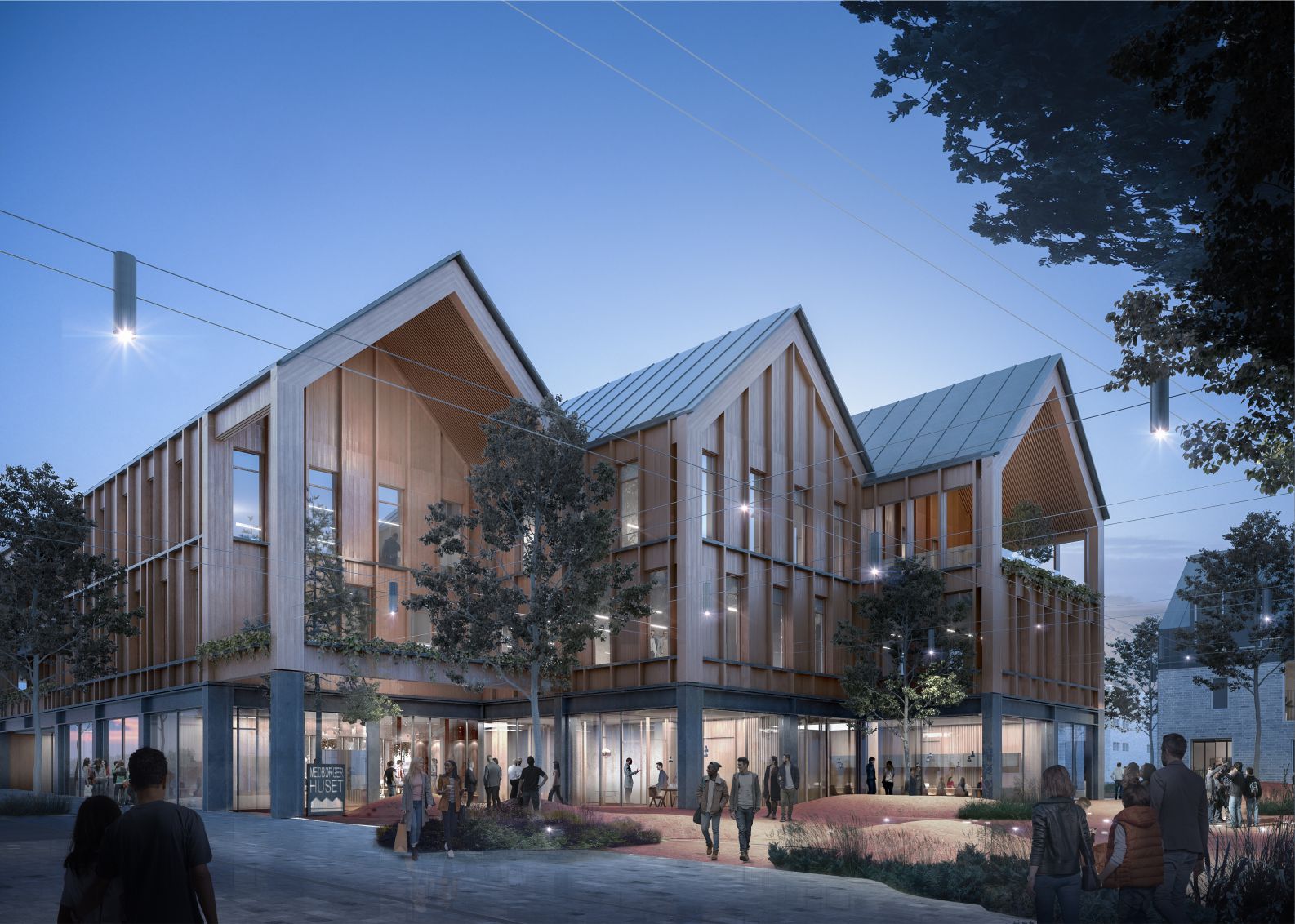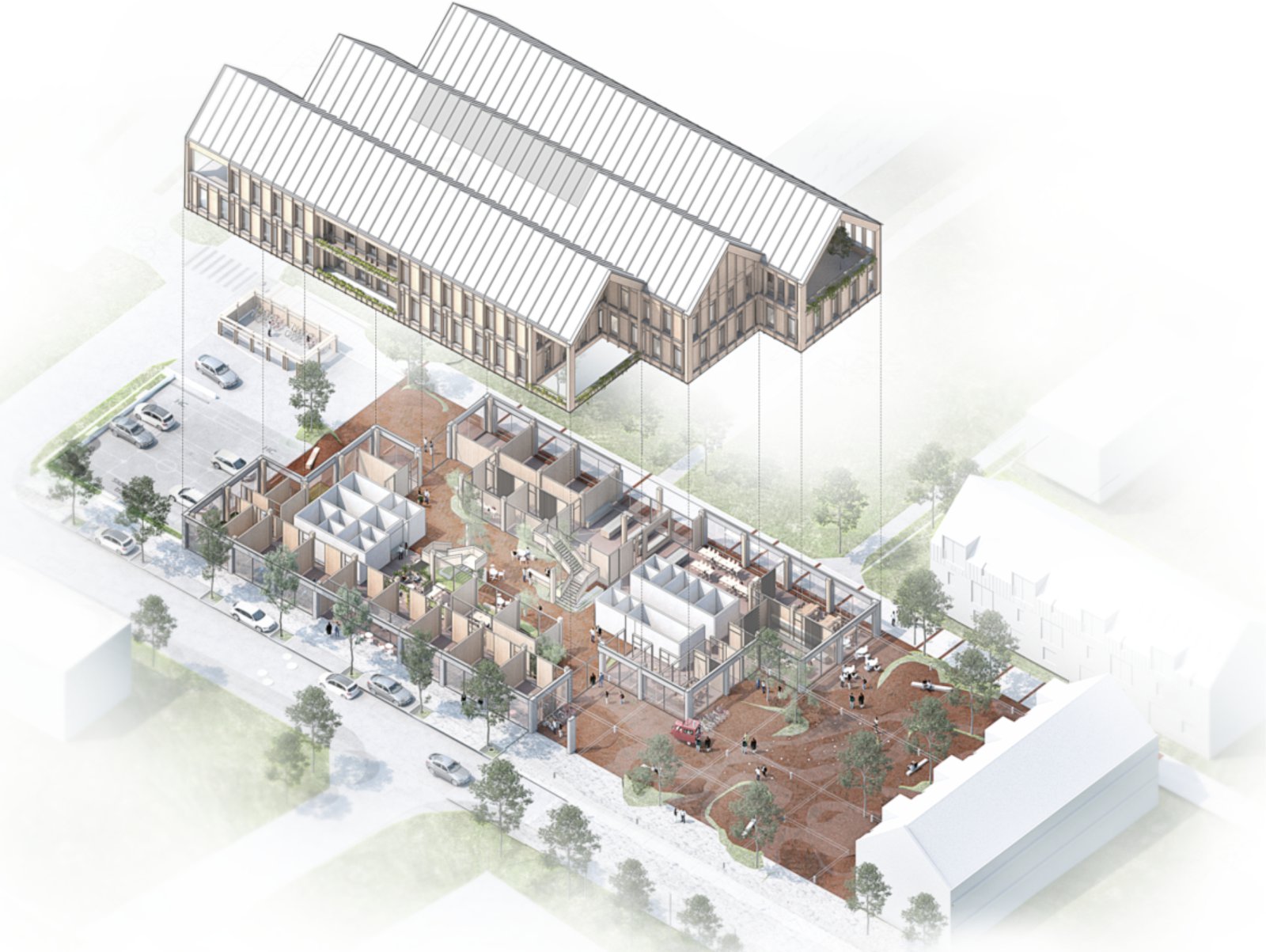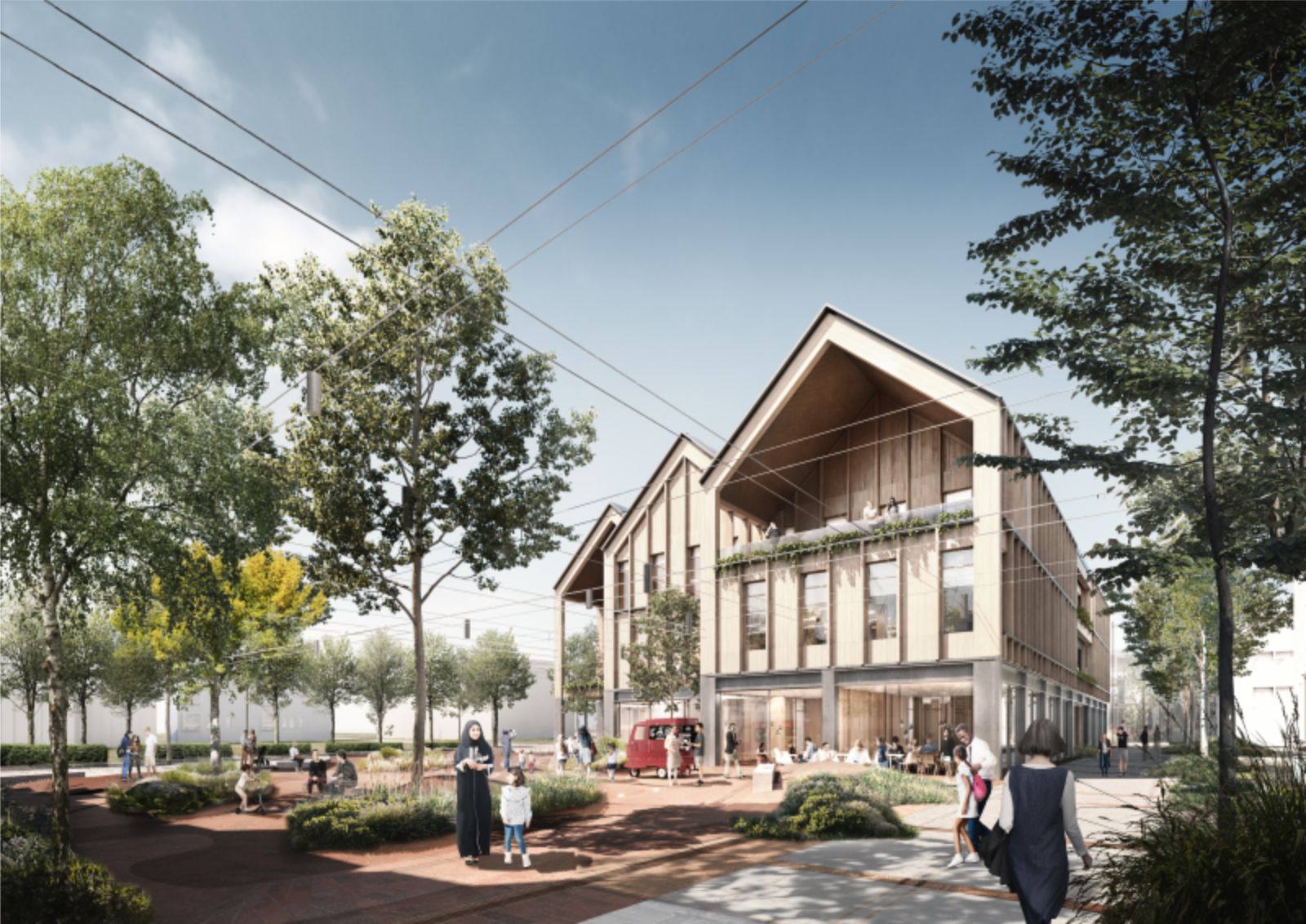AART has won the competition to design the new office and community centre in the district of Viby Syd in Denmark's second largest city, Aarhus. The office and community centre will be a wooden building designed to give the area a sustainable boost by making it a healthier and more socially stimulating place to live, work and enjoy everyday life – in tune with the visions of the developers The City of Aarhus and the housing association Boligforeningen Århus Omegn.
"The development in Viby Syd is a great example on how we work to make Aarhus a mixed city – and how we work together to do so. The development of Viby Syd has only been made possible by the share effort between municipality, housing association, contractors, and local players and we are now ready to take the next great step – to the benefit of the area and the rest of Aarhus," says Jacob Bundsgaard, mayor of Aarhus.
An inner climatic Babylonian garden
The vision of the office and community centre is to create a place that can become an active of the entire area. With its multifunctional town square, it leaves space for not only recreation and everyday living, but also acts as a new natural gathering point for residents and visitors where market days and town fairs can take place.
The red tiles and green elements of the surrounding square will simultaneously flow through the entire building and the ground floor, to then open up into a public passage with community centre, café, and much more, while the office spaces on level 1 and 2 will spread along the passage to become a green atrium – the very heart of the building. "An inner climatic Babylonian garden that creates the optimal light conditions and visual contact between the separate office spaces around the building," highlights the evaluation report on the winning proposal.
More life, less CO2
With its surrounding square, public passage, and mixed functions the house is created to maximise life, while its material is designed to minimise its carbon footprint. With wood as its recurring element in facades, pillars, floor structure, as well as roof construction it builds on the principles behind 'Design for Disassembly'. With other words, it is designed to reduce construction waste and thus its carbon footprint, as its materials can be removed, sorted out and recycled.
A significant architectural tool as construction waste stands for 35 percent of all waste in Denmark. "Not only is wood recurring in the constructive concept. It is also an integrated and natural part of the building – on the inside, as well as the outside, where trees and plants play a central role. Not just something for the eye to catch, but also for the well-being of the people that work and move around the building," says Anders Tyrrestrup, partner, AART.
Designed to reduce illness
With the effect of architecture in mind, the building is predisposed to create the optimal conditions for great daylight and opportunity to look at the green elements inside and outside. Not at least because studies show that trees and plants add to a better indoor climate that can reduce common illnesses such as the flu with 52 percent and sick leave with 10 percent.
A better indoor climate will, therefore, contribute positively to the well-being of the building's users and the bottom line of The City of Aarhus and Boligforeningen Århus Omegn who will continue to run the building in the future. Source by AART.
Source: aasarchitecture.com







Комментариев нет:
Отправить комментарий